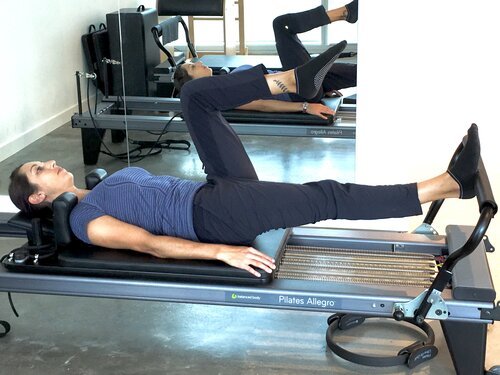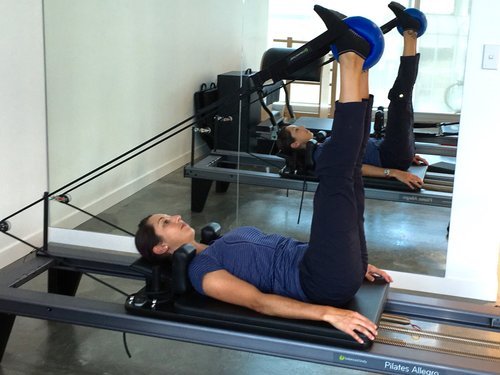Boost Your Running Performance With Pilates!
Early mornings are really the best time to get out there before the rest of the day starts! Running is a great way of keeping fit as it is a full body workout – it involves using the powerful muscles around your hip and knee joint, coupled with a stable though flexible upper body.
Unfortunately running is also one of the main sports that brings people into physiotherapy clinics due to the impact it causes in a body that is not powerful, stable or flexible enough to withstand the demands of this sport!At Limitless we use two strategies to help you get up to speed again with your running. These are self-observation and clinical evaluation of movement, as well as Clinical Pilates. Pilates can improve running because it loads muscles and joints initially in a controlled way using resistance; the body is placed in a non-challenging position such as lying down on your back or side, progressing through to sitting, standing and complex movement. This way you have a chance to work out how to correct body alignment before you put all the pieces together in a more dynamic way and return to full steam.Let’s now look at some running specific Pilates exercises that will get you focused!
Footwork on the Reformer
Footwork on Reformer
Footwork is a great exercise to begin strengthening your hips and knees in an aligned position. There are many variations to this exercise and it can be progressed to suit all levels of training. Lying on your back, your feet push against a bar to straighten your legs.Strengthening hip and knee joints: these joints distribute the forces between lower body and the lower abdominal or core area. Weak hip muscles allow the pelvis to sway sideways when your foot touches the ground which puts stress on joint structures such as bursas, ligaments and cartilage. It is also important that the knee is aligned with the hip on weight bearing, whereas an unstable knee can potentially stress one side of the joint or the knee cap, causing pain, poor performance and hours of physiotherapy!
Lunge and punch at the Trapeze Table
Lunge and Punch
In standing, your hands hold loops attached to springs, as you lunge forward you punch with opposite arm, and add a gentle thoracic rotation at the end. This exercise can be progressed to more challenging levels by adding more resistance or a step up/down.Stabilisation of lumbar spine and mobility of thoracic spine: the lumbar spine receives force from one leg at a time as one foot is in contact with the ground whilst the other is in the air preparing to touch down. This asymmetry, although functional and appropriate to running, requires strong spinal and core muscles on the opposite side to stabilise the pelvis. There is evidence that a strong core decreases recurrent hamstring injuries too! The thoracic spine on the other hand will need to give in a little so the arms can swing front and back. A stiff thoracic spine will add stress to the lumbar spine; it is a wave of effects as you can see!
Feet in straps on the Reformer
Lying on your back with loops attached to your feet, legs are straight and moving up and down propelling the platform you are lying on. This will give you a gentle hamstring stretch while you are also tensing this muscle to slow down the movement – a similar action during running! Calves can easily be stretched and strengthened using the foot-bar of the Reformer.
Lengthening hamstrings and calves: hamstrings are the bulky muscles behind your thigh and calves are behind your lower leg. The hamstrings come under tension while in a stretched position; this occurs when you are preparing to land the swinging leg. Hamstring pain might result from poor pelvic alignment, sciatic nerve irritation or prior injury where the muscle heals with less flexibility and becomes more prone to injury. Poor calf flexibility and/or weakness can also contribute to strain and/or pain!
The Scooter
Feet in straps on reformer
Scooter
Add a great full body exercise to your Pilates session which is functionally appropriate for runners as it challenges flexibility, balance, leg strength and core stability, all in one! If you are experiencing pain during or after running, or are simply wondering how you could improve some elements of your running such as speed or endurance, you will be happy to know that bodies are very responsive to corrective training, specially when you can understand the mechanics of movement by watching how you run. Call us or drop by at Limitless Physiotherapy & Pilates to book your personalised running assessment and Pilates sessions. See you soon!Janine VargasSave






